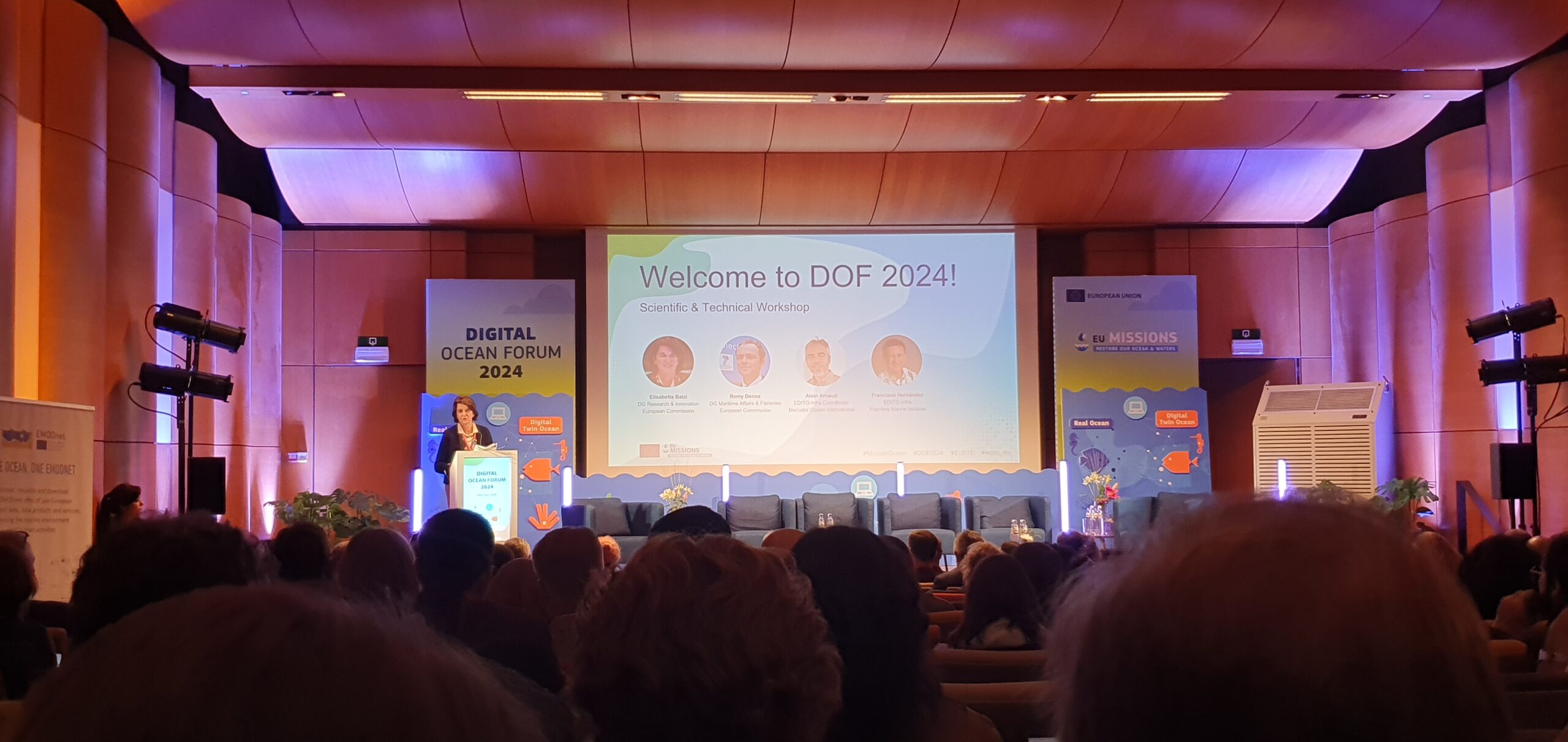On the 13th of June there was a 'Digital Ocean Forum' meeting for the EU Digital Twin Ocean (DTO) held at the grand Palais des Académies in Brussels. The DTO is now two years into an ambitious programme to provide a platform to deliver a multi-dimensional view of the ocean to end users, including scientists, citizens, industry, and policymakers. Whilst still a work in progress the DTO takes the two largest ocean data services, Copernicus Marine Services and EMODnet, and integrates them together into a core infrastructure and interface: EDITO-Infra.

OCEAN:ICE attended this event, which consisted of a number of technical demonstrations, end user discussions and future roadmaps. It also attended and contributed to the 'Technical and Scientific workshop' event on the 12th of June, where the nuts and bolts of the EDITO-Infra interface were explored, alongside discussion groups about future direction and opportunities. In its present form EDITO-Infra provides a cloud-based interface with the 'data lake' of the above datacentres products, on which users are able to build models of various complexity, using the dedicated cloud compute facilities of the DTO. These models, once properly validated, may be made available to end users.

Whilst at present the DTO is heavily focused on European waters, particularly the coastline, ultimately it aims to include global models and incorporate polar regions and applications. OCEAN:ICE is already providing data to the DTO Data Lake via our submissions to EMODnet, notably the near real time data coming from floats deployed over the last season by WP1. As the impact of sea level rise and changing ocean circulation and properties is a core concern of the DTO, ultimately polar drivers of these changes will need to be incorporated into their modelling.
The author of the article – Andrew Meijers (BAS)


